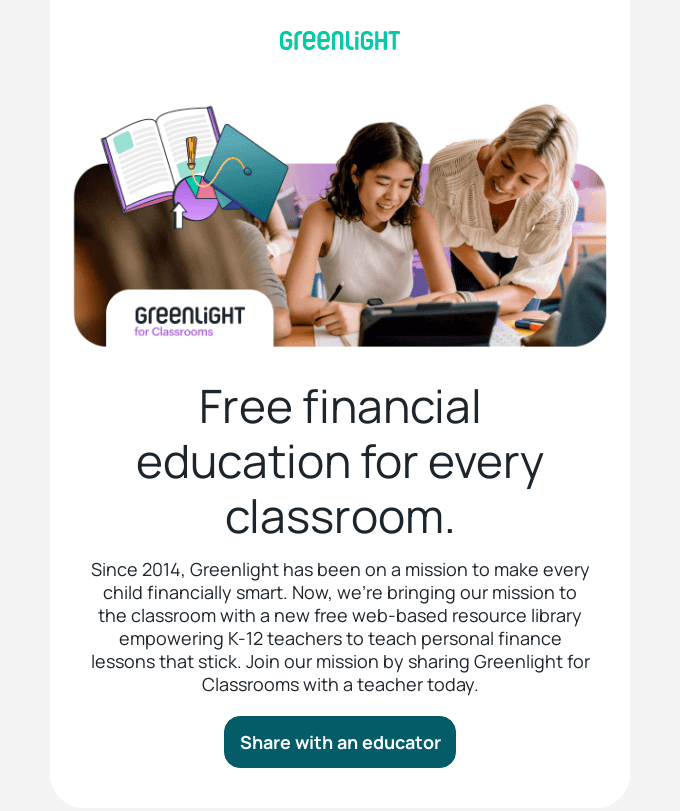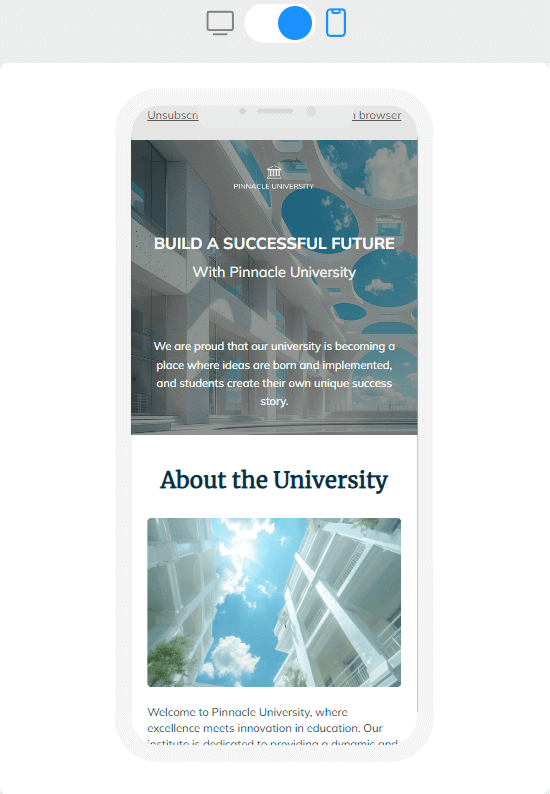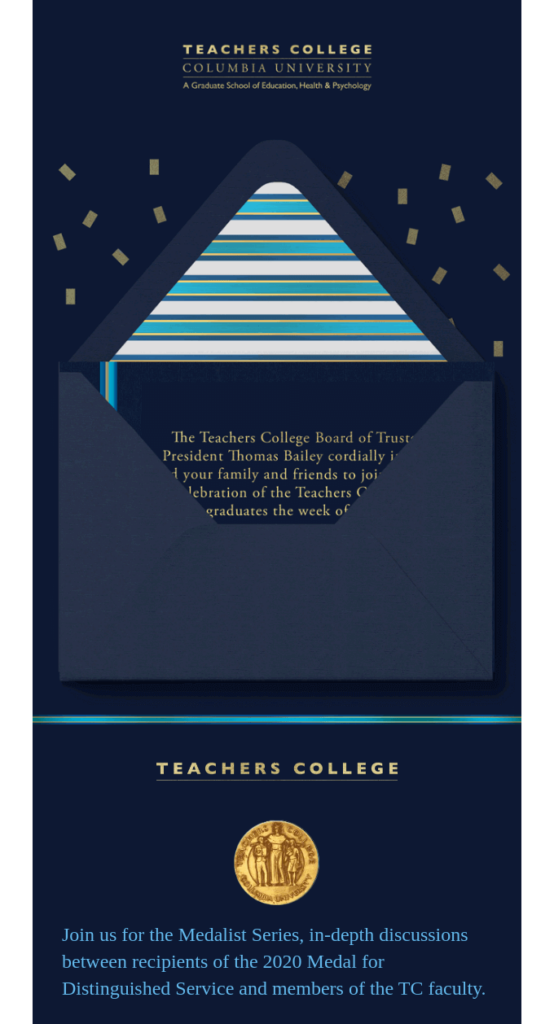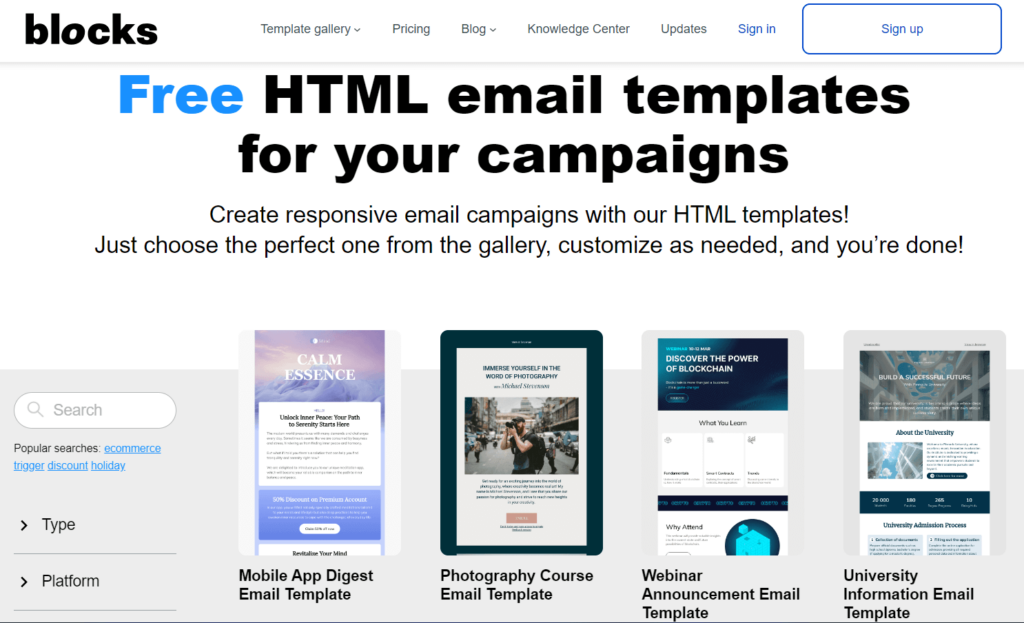Education Email Templates for Efficient Communication
In today’s fast-paced educational landscape, clear and efficient communication is paramount. Institutions need to keep current and prospective students, faculty, and staff informed about a multitude of matters: from course updates and event announcements to financial aid details and important deadlines. This is where education email templates become invaluable tools that streamline communication, save time, and ensure consistency.
Time to take a look at valuable tips for education templates to catch the eye of a prospective student (and assure current students that they made the right choice)!
This article delves into the benefits of utilizing education email templates and offers practical tips on crafting compelling email copy and user-friendly designs. We’ll also explore the advantages of emails for the education sector and see how Blocks can help you craft your effective educational email templates.
Why the Education Sector Needs Email Templates
Email marketing is an excellent tool for various industries, and education is no exception. Here are 4 reasons why educational institutions should leverage the power of email templates:
Enhanced Efficiency
Pre-designed templates are an efficient solution that allows for quick and consistent messaging. They save time for teachers and administrators to focus on core responsibilities.
On top of that, templates also provide a structured framework for crafting informative emails without having to start from scratch every time. You can simply take a previous email template and customize it with new information without changing the overall structure!
Improved Communication Clarity
Your audience may vary greatly and comprise high school students or working adults who take courses after hours. And with the help of templates, you’ll be sure to reach out to them in the best fashion!
Templates ensure that essential information is presented in a clear and organized manner. This, in turn, helps to:
- minimize confusion
- promote better understanding among recipients
- maintain transparency and foster trust within the educational community
Increased Engagement and Participation
A well-designed email template can be used to inform and promote events for current and prospective students, increase course registrations, and encourage participation in student organizations and activities. This, in turn, contributes to a more engaged and vibrant educational environment.
Consistency
Design your email template to always keep the required visual style (for example, in the vein of the university website) and ensure consistency. A well-made template will help your educational institution maintain a professional image across departments and communication channels.
Essential Tips for a Compelling Education Email Copy
One of the most important components of an effective email template is a compelling email copy. Let’s take a look at 5 important aspects that make them as effective as possible:
- Subject line clarity. Start with a clear and concise subject line that accurately reflects the email purpose, for example, “Online Courses Update” or “Campus Registration Now Open”. This way, you can highlight the main objective of your message and help recipients prioritize and quickly understand the email content.
- Personalized greetings. A personalized greeting (with the recipient’s name included) demonstrates respect and adds a professional touch. For this, you can easily utilize dynamic content features in email templates.
- Clear and concise information. Present information in a well-structured manner. Use bullet points, numbered lists, and headings for ease of readability. Also, don’t forget to highlight key pieces of information, such as deadlines, important dates, and contact details.
- Professional tone and language. It’s crucial to maintain a professional and respectful tone throughout the entire email. Use appropriate language suitable for the target audience and avoid informal language or excessive use of jargon.

- Accessibility considerations. Finally, ensure your email templates adhere to accessibility best practices. Use clear fonts, sufficient color contrast, and alternative text descriptions for images so that everyone can access and understand the presented information.
Best Practices for User-Friendly Education Email Templates
When it comes to email marketing, design becomes a key component. Listed below are 5 design tips for efficient educational email examples:
Mobile-Friendly Optimization
Today, the vast majority of emails are opened on mobile devices. With that in mind, you must always ensure that your templates are responsive and optimized for a seamless mobile experience.
And if you craft your emails with Blocks, you won’t have to worry about mobile optimization. Check how your email looks on various screen sizes directly in the builder!
Visual Appeal
Boost the visual presentation of your email template! Consider incorporating your school, college, or university logo and subtle visuals (like campus photos or event-related images) to enhance brand recognition and catch the reader’s attention. Yet also keep in mind that visuals should not distract from the primary message.
Consistent Branding
Once again, you need to maintain consistent branding throughout the email. For this, use the color palette, fonts, and logos associated with the institution. Such consistency builds recognition and reinforces identity.
Clear and Organized Content Structure
As in the case of email copy, you’ll need to create an organized structure for your emails. Consider a clear and uncluttered layout with properly positioned elements to improve readability and information retrieval.
Contact Information Visibility
Lastly, design your email template to correctly communicate all the relevant contact data, such as email addresses and phone numbers for further inquiries. Don’t keep the readers guessing: make all the important information and links visible at first glance.
Build Your Educational Email Templates with Blocks
Creating individual email templates for different purposes can be time-consuming, especially for large institutions. Fortunately, digital tools like Blocks, our no-code email builder, can streamline the process and make crafting your perfect template a breeze.
Here’s what makes it stand out:
1. Template library. Need a photography school email example? Or a university newsletter template? Blocks is ready to help!
Our tool offers a whole library of pre-built aesthetically pleasing templates. Each email template is easily customizable to match your institution’s branding and specific requirements.
2. Ease of use. Blocks offers a drag-and-drop interface that allows users to personalize their templates without any coding expertise. In turn, this will help you save valuable time and resources.
3. Dynamic content. Want to leverage personalization in your email communications? Then Blocks is exactly what you’re looking for!
Our email builder makes it easy to include dynamic content into your email template: student names, course codes, and event details. Personalize each email, enhance the user experience, and showcase your institution or online courses in the best light possible!
4. Collaboration tools. Invite your team on board and work together in real time to design and edit your education email templates! Ensure consistency and quality control of your emails, and make every contribution count.
Conclusion
In the ever-demanding world of education, clear and efficient communication is essential for fostering a thriving learning environment. Education email templates become a valuable tool for different institutions to streamline communication, save time, and ensure consistent messaging across various communication channels.
Whether you’re looking to craft higher education email templates or leverage the power of education templates for online courses, software like Blocks will serve as a useful companion. Embrace your creative endeavors and save time and money in the process!


